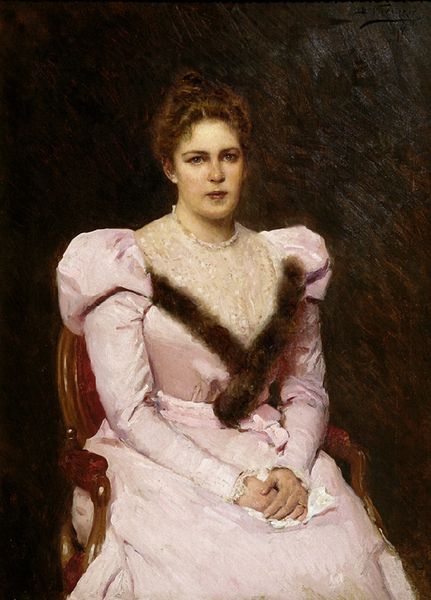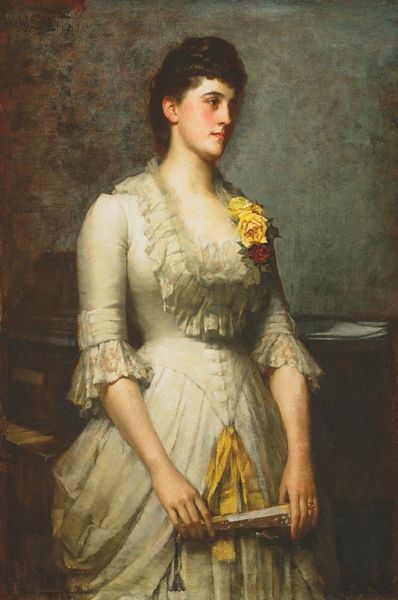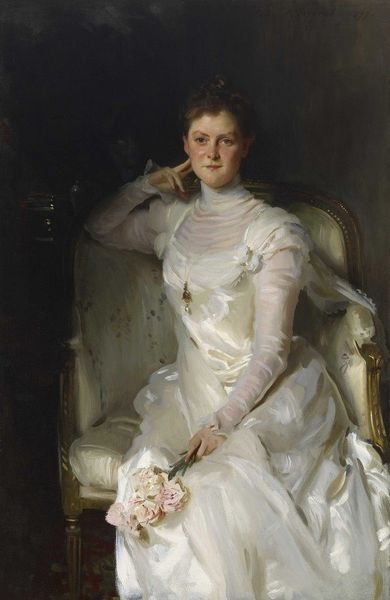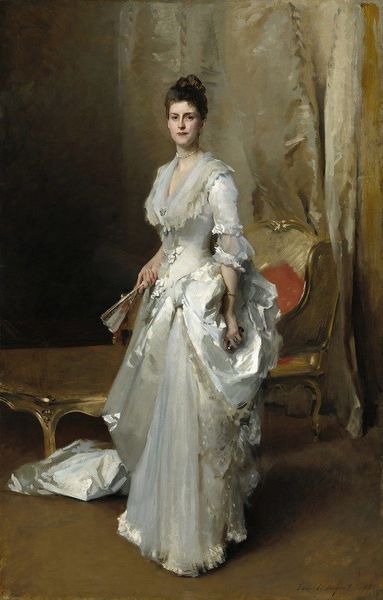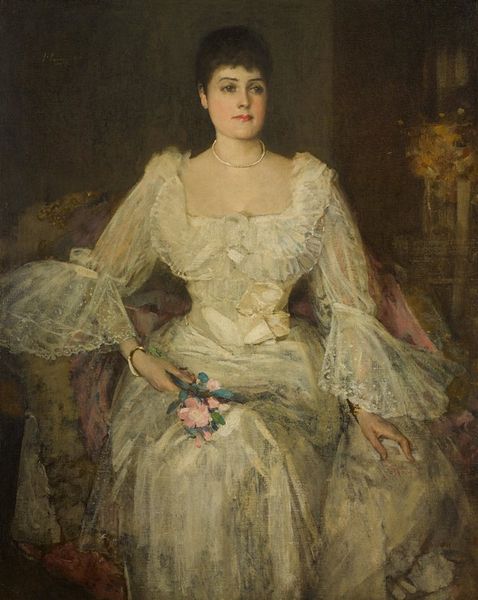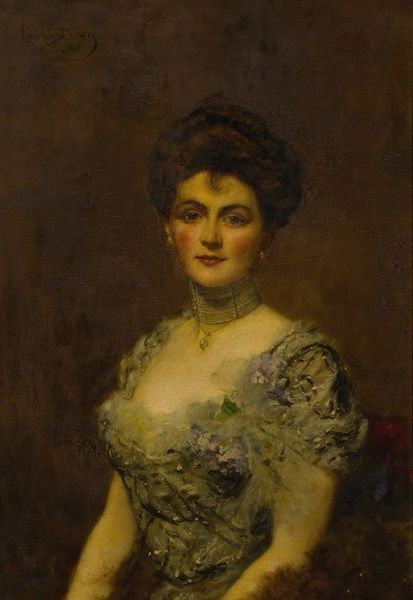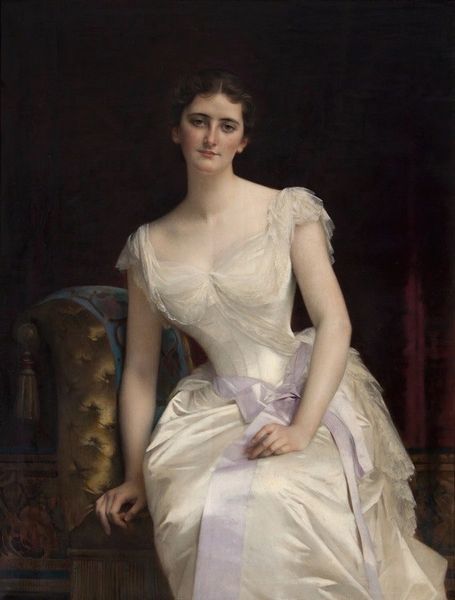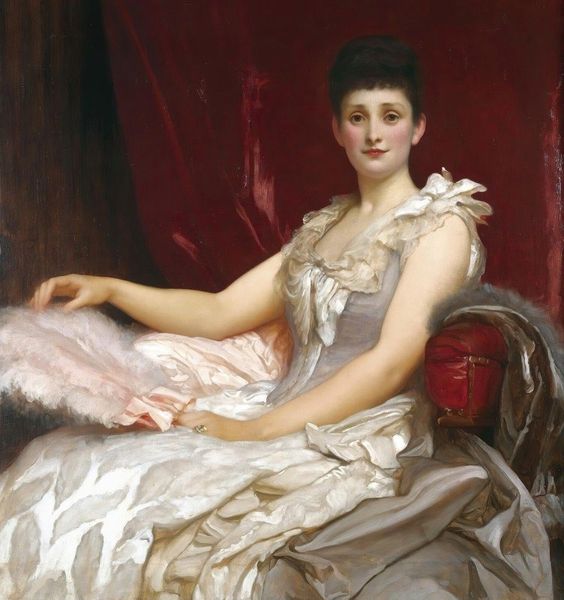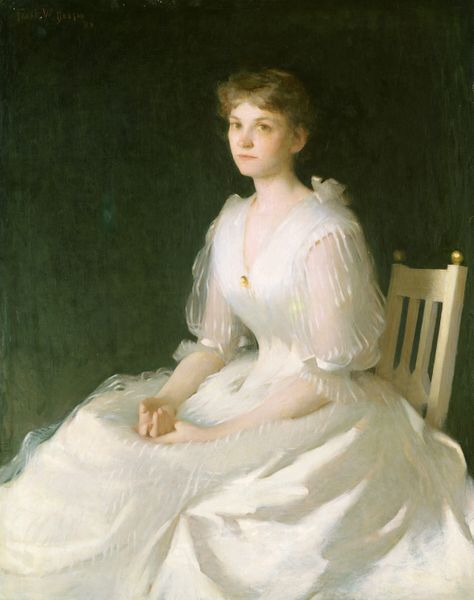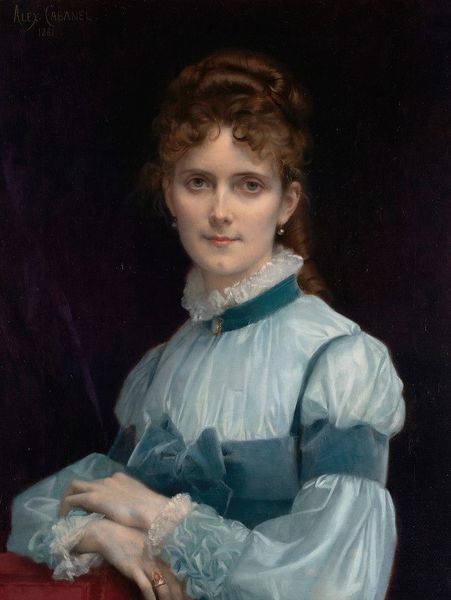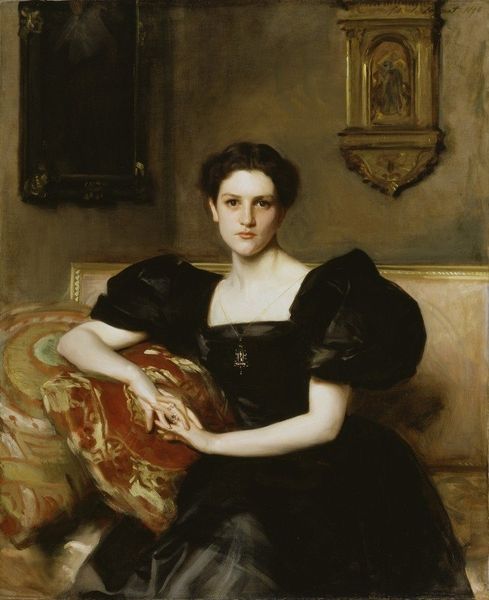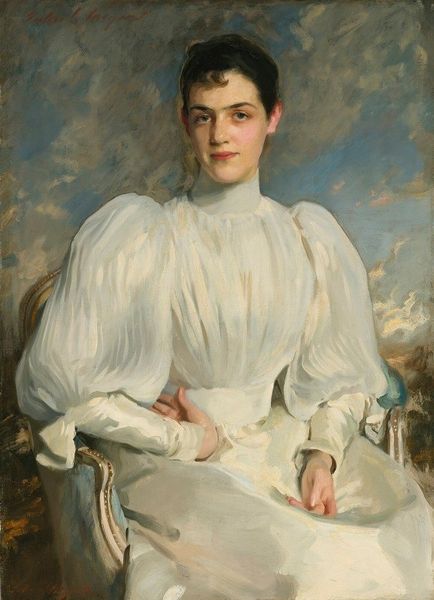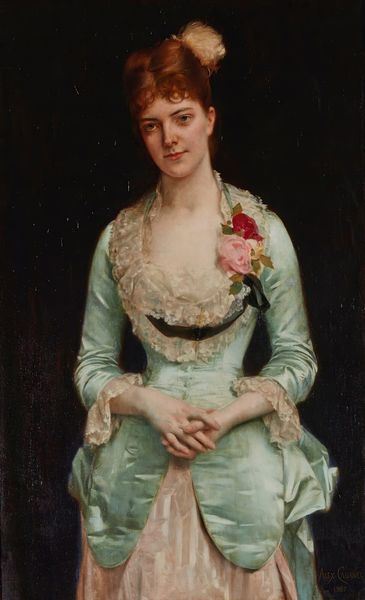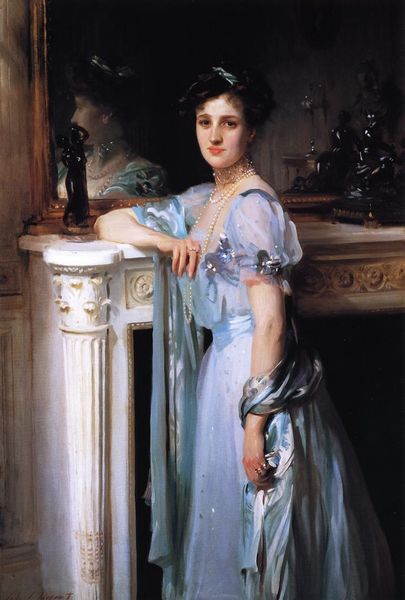
painting, oil-paint
#
portrait
#
figurative
#
character portrait
#
painting
#
oil-paint
#
portrait reference
#
portrait head and shoulder
#
underpainting
#
academic-art
#
fine art portrait
#
realism
#
celebrity portrait
Copyright: Public Domain: Artvee
Curator: What strikes me immediately about Millais’ “Portrait of Mary Endicott,” completed between 1890 and 1891, is the pervasive quietude. Editor: Yes, the quiet is almost deafening! The woman holding her tea, the subdued palette... It projects a mood of constrained domesticity. Do you sense the weight of societal expectations there? Curator: Absolutely. Millais positions Endicott—who would soon become Mrs. Joseph Chamberlain—within a very particular social framework. The portrait becomes an interesting point of access when thinking about women's roles, class, and performativity during that period. It also begs the question of women's representation. Endicott becomes, simultaneously, a powerful figure but one firmly located in the domestic sphere. Editor: Tea becomes a charged symbol here. It transcends mere refreshment and alludes to ritual, societal structure, and female networking. Beyond the surface, that simple cup carries significant emotional and cultural meaning. We're talking about tradition made manifest. Even the carefully rendered flowers seem deliberately positioned. Curator: Precisely. The painting participates in a symbolic language of power, gentility, and visual restraint, all working to fix her identity and the position of the painting within broader, politically charged structures. Consider the artist’s masterful play of light on the delicate china and lace; the whole piece conveys almost unsettling realism. Editor: The symbolism and realism is intriguing. Yet, at a certain level, she is inscrutable, isn’t she? Her direct gaze pulls you in, but she withholds any intimate glimpse. Curator: This visual and emotional restraint is indeed palpable. Ultimately, Millais offers us more than just a likeness; he gives us an incredibly detailed historical and cultural artifact. Editor: Right, this deep dive shows that artworks such as "Portrait of Mary Endicott," reveal that the quietest scenes can carry the weightiest cultural stories.
Comments
No comments
Be the first to comment and join the conversation on the ultimate creative platform.
